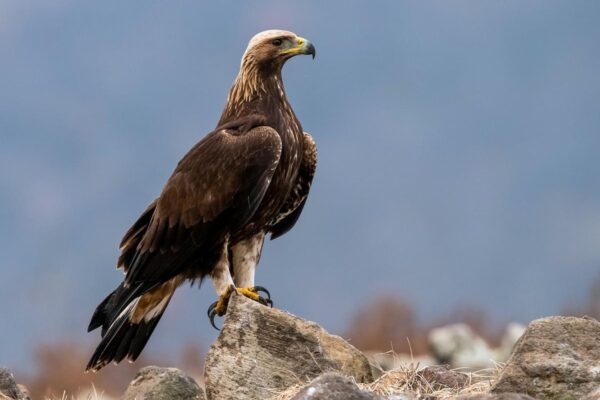It goes without saying that hens are among the most widely employed flock birds for both milk and eggs, having been domesticated for a very long period. Nevertheless, hens are raised on farms all over the globe in a variety of climes for both eggs and meat, and they have managed to avoid the harsh winter winds and low temperatures so far. Since they have long since learned to adapt to shifting weather patterns, chickens are able to withstand the bitter cold of winter, particularly at night, because of their feathers. It’s important to note, too, that some varieties of chickens adapt better to colder temperatures than others.
Chickens have adapted over a long period of time to withstand very cold temperatures. This indicates that they have evolved to withstand both below-freezing temperatures and very cold conditions. Compared to humans, chickens have greater body temperatures and don’t perspire or lose heat as people do. Furthermore, their feathers have precisely developed to shield them from frigid temperatures.
All domestic chickens will spend more time in their chicken coop throughout the winter, huddled close to one another, exchanging heat and attempting to stay warm.
Chickens will go outside to stretch their legs when the weather is not too cold, but in the winter, they will look for methods to stay warm and continue to thrive.
There’s just so much you can do to keep your hens warm if you’re a farmer who has constructed a sizable coop for them. They can, as we just discussed, keep themselves warm quite fine, but if you live in a colder area, you may want to think about obtaining hens who are better used to the cold.
That being said, you will discover in this post how much heat chickens need in the winter to be warm, whether or not you have cold-hardy hens. We’ll also provide a list of things you can do to keep them even warmer. Remember that hens cannot adjust their body temperature by sweating as some other animals can, so excessive heat is detrimental to them. To find out more, keep reading.
In the winter, how much heat do chickens need?
You should be worried about your hens’ ability to withstand the cold if you’re a rookie farmer who has never experienced a winter with them or if your winter is very chilly.
Anyone unfamiliar with chickens might wonder whether they would be able to survive the harsh winter weather since they are such delicate and fluffy creatures.
Fortunately, for thousands of years, hens have been adjusting to the harsher winter weather. They were able to withstand below-freezing conditions because to that.
They can stay warm even in the bitterest winters because of their thick feathers, which envelop all of their important organs.
Thick feathers serve as a cloak to shield hens from snow and harsh winds, just as hair shields many mammals during the winter. When they’re lying down, they may bury their legs and beak within the heated feathers to stay warm even if their legs may feel chilly.
The hens will stroll about their cage in the warmer months to get some sun exposure and the extra vitamin D they need to keep their immune systems operating properly. This will also help shield them from the cold.
The huge majority of feathered hens are doing a terrific job of keeping themselves warm throughout the winter. But as we said at the outset of the piece, some breeds are more resilient to the cold than others. They can stay warm because of their bigger, thicker feathers.
Furthermore, smaller-combed hens are better at withstanding cold; the less uncovered skin a chicken has, the more cold resistance it has. These breeds include, to name a few:
Chickens from Plymouth Rock Cochins
Adult Chickens’ Australorp Rhode Island Red Temperatures
A research found that adult hens are best suited to temperatures in the mid-70s. This is just a stand-in for the greatest temps they can tolerate, so don’t worry if it’s lower. They’re completely acclimated to that type of weather. Adult hens’ normal body temperatures range from 105 to 107 degrees Fahrenheit, according to the article.
You should not fear that mature chickens cannot lay eggs in temperatures below 70 degrees Fahrenheit; they may lay eggs in cold conditions as well.
Although chickens get used to lower temperatures and can survive the winter, it’s still a good idea to make sure that laying hens have adequate warmth in their coop and that they can still use their energy wisely throughout the day to maintain their general cheerful disposition and high level of excitement.

Having said that, every farmer has to make sure that his hens are warm—not too hot, not too cold. As was previously established, hens are not as effective at controlling high temperatures as they are at controlling low ones in cold locations.
Chickens will feel like eating less in a heated climate, which will lower the quality of their eggs. Every hen will have enough room in a large coop to be comfortable and remain warm adjacent to a heat source when needed.
Warmths for Females
You need to be much more careful when controlling the temperature for chicks than for chickens if you’re using them for breeding in addition to eggs. Since they are still infants, chicks are not acclimated to very cold temperatures. They may get ill, even die, and are susceptible to colds.
Even at normal conditions, chicks need a lot of food and heat to remain warm since they are young and lack fully grown feathers.
Making ensuring their room has enough heat is crucial in the early stages of their life to prevent them from getting a cold that might be deadly. From the time they hatch, chicks should be kept between 90 and 95 degrees Fahrenheit.
Lowering the temperature is acceptable in some circumstances, provided that it stays above 80 degrees. A research found that chicks exposed to temperatures below 80 have a slower rate of development. When they become bigger and become pullets and cockerels, it’s important to reduce the temperature.
It’s important to remember that you can lower that temperature as they age. When they are five weeks old, they will be prepared for adult hen temperatures. You may then lower the temperature to between 70 and 75 degrees.
How Can I Keep My Chickens Warm During the Winter?
Although hens are naturally acclimated to cold weather, there are still a few things you can do to ensure their comfort since, although well-suited to the cold, chickens still love to be warm, and this will lift their spirits in general.
In light of this, go through the advice on how to keep hens warm throughout the winter months before rushing out to buy a heat lamp or ceramic heater (we’ll speak about them later).
Get Coop ready for the winter.
As soon as the temperatures drop, in mid- to late-fall, one of the first things to do is to make sure that the hens will have a warm winter. It’s important to do the essential repairs and maintenance on the chicken coop before the birds start to hibernate during the winter months. Some people even prefer to do this in the early autumn.
Because winter is characterized by strong winds, rain, hail, and snow, it is essential to seal up the winter coop’s wall and roof openings to stop leaks. Make careful to patch any major holes with sturdy material and shield the coop from windbreaks. More significantly, predators will have more space to enter the coop and dismember your hens since other animals will be looking for ways to stay warm.
Make careful to smooth down any rough edges that might damage or strike your hens, and fix any loose perches. Fixing the outside enclosure is just as important as ensuring the winter coop is properly insulated.
Having said that, you should fix the mesh and the fence and install a windbreak-style additional roof to provide the hens more protection from the rain and snow. Maintaining enough ventilation in the cage is also crucial to allowing foul smells from excrement to escape without endangering the health of the hens. Additionally, it’s crucial to routinely clean the coop and run.
Take a look at the Deep Litter Method.
A technique for deepening the bedding material is called the “deep litter method.” It also entails allowing chicken dung to build up in the spring and summer so that there will be enough composting material during the chilly winter months to enable hens to be heated in conjunction with their bedding.
Although this method of caring for your hens isn’t the cleanest and will definitely produce an unpleasant stench, it works well for keeping the chickens warm without the need for heated lamps or other possibly hazardous sources of heat. It has also been shown to be very beneficial for laying hens.
Incorporate More Light
Every hen is different when it comes to whether or not she will cease producing eggs in the winter. Some of them can go on producing eggs, and if the right circumstances are met, the eggs won’t freeze. It’s very natural for some other ladies to cease producing eggs, so there’s no need to be concerned.
Even those who do not stop laying eggs will still benefit from additional warmth to help them do so. In this manner, you may utilize extra lighting to keep them warm. It’s only a lamp that will provide them access to a longer source of light so they may lay eggs on foggy, gloomy days that are also brief.
Editor’s note: Remember that not all hens benefit from more light. Although there are advantages to utilizing it, some chickens may get confused and stressed out by it. It’s crucial to leave it off at night so that the hens may unwind and not only concentrate on laying. Some studies claim that leaving an additional light on constantly might stress the hens and reduce their lifespan for producing eggs.
Give Them Entertaining Things to Do to Kill Time
Your ladies are going to want to remain inside the coop on particularly chilly, muggy days that are packed with wintry blizzards and rain. Nevertheless, if they are confined to a small area or spend too much time in the coop, they might get anxious and stressed out.
Since chickens are gregarious creatures, they need a kind of entertainment throughout the day. Making games for them to play with one other is one of the best ways to do this. In the winter, allowing them to be active and restless can help keep them warm, so think about including a ball of some kind for them to push or pluck on.
A head of lettuce or cabbage is often left hanging from a piece of wood, and the farmers go about pecking at it and pushing it slightly to swing. Steer clear of leaving iceberg salads if you’re leaving lettuce since the little tummies can’t handle the weight.
Not only will your hens be content and toasty, but they’ll also have full bellies from consuming nutritious treats all winter long. Remember that a research claims that enhanced environments with entertainment possibilities make hens happy.
Put Petroleum Jelly on Their Combs
As was previously said, since their combs won’t freeze, chicken breeds with smaller combs are more suited to the cold. There are still a few things you can do if your breed of chickens isn’t inherently better suited to surviving the cold.
Among such is applying petroleum jelly to the big combs of hens to protect them from frostbite. on avoid frostbite, you may also apply petroleum jelly on their wattles.
Editor’s note: Remember that frostbite in hens is not as dangerous as it may be in people and some other animals. It usually isn’t too bad and heals itself most of the time.
Increase the Hay in Their Coops
Adding more hay to the run and coop enclosure is one of the newest methods that must be used to keep hens warm as the temperature falls close to freezing, approximately 20 degrees Fahrenheit.
Your hens will benefit from your decision whether you use hay or straw as their legs will remain warm and not get frostbite.
Increase the Number of Feeding Choices
Giving your hens higher-nutrient diet can help keep them warm as well. In order to increase their calorie intake and remain warmer, many farmers add additional goodies and corn cobs to their meals. To keep the hens warm at night, many farmers also do so in the evening.
Since corn takes longer to digest than other foods, it will stay warm in the stomach while the meal is breaking down.
What Should You Avert When Heating Chicks?
Many farmers engage in a behavior that puts the hens in grave danger: lighting the coop with a ceramic or heat lamp. This kind of behavior is often harmful to and deadly for birds, like hens. In addition, the hot light poses a risk of fire since it might catch fire.
More significantly, heat exhaustion rather than being comfortable might cause hens to overheat, which can have an impact on their disposition and interactions with other flock members. Furthermore, the heated lamp may sometimes drop owing to strong winds or storms, which might cause a rapid decrease in temperature that could be harmful to the chickens.
Chickens are cold-weather acclimated, but they shouldn’t be forced to acclimate to warm or even hot temperatures in the winter, since they won’t be able to acclimate to the cold again once their heat source is removed. Unless your property is really chilly, avoid using ceramic or heated lights for your hens.






